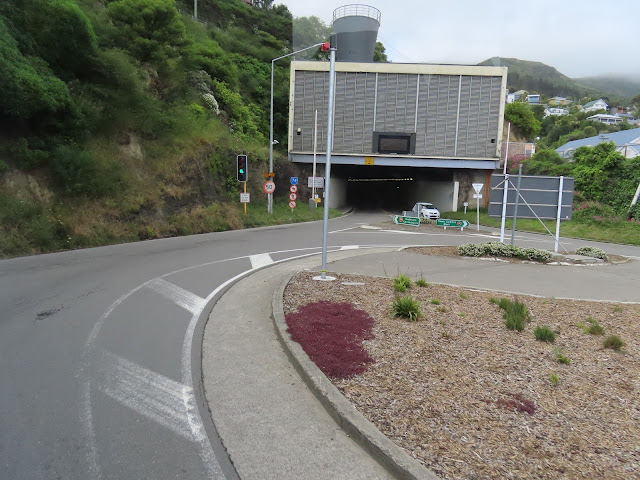Today is a National Holiday celebrating the Canterbury Region, which includes Christchurch. Maybe it’s a Regional Holiday. It’s hard to tell. Many things are closed, and there is a 15% surcharge at restaurants because they have to pay people more to work on the holiday. It is also a sort of Black Friday here, even though they don’t have Thanksgiving. I have also heard that Black Friday is next week.
When we got on the bus, Gavin passed out some local treats for us to sample. I really liked the Tim Tams, a cookie. (They say “biscuit” here.)
As our bus left Christchurch we headed into an area of beautiful rolling green hills. There were lots of sheep and cows. I tried to take notes while the bus was rolling along. Please excuse any errors or omissions on my part.
Against this pastoral background, Gavin discussed environmental issues. New Zealand is responsible for 0.09% of the world’s emissions - mostly from agriculture. Gasoline is heavily taxed. They pay the equivalent of US $12/gallon here. In some areas there is a 25% tax on top of fuel prices, There is a pickup truck tax. A proposed farmer’s tax is unfair, in Gavin’s opinion. There is a rebate for low emission vehicles. And so on. I sensed that Gavin’s information is filtered through a sieve deigned to fit his opinions, and should be taken with a grain of salt.
When we arrived at Rubicon Valley Farm, our host, Chris, joined our bus at the gate and talked while we drove in to the woolshed area. Chris is a very large retired cop. He is an excellent presenter and he gave us a quick, no nonsense orientation to the farm and the Shearing Show we would be seeing shortly.
- If you something is going to hurt you, it probably will. Don’t touch it.
- There’s a fence with a yellow sign on it. If you’d like to let me know if it is still electrified, please touch it.
First, we visited a pair of winsome alpacas. Obviously not New Zealand natives, but then neither are sheep or cows. Chris gave a short explanation of why he has alpacas on his farm. It boiled down to this: they are good-natured and easy to care for, and they yield nice wool. He trained the white one to come up and put his face on your shoulder when you put your arm around the black one.
Next, Chris introduced us to his dogs and explained their characteristics. He had two “eye dogs” that were mostly Border Collies, and one dog of a breed called Huntaway. Then Chris demonstrated how he uses the dogs to herd sheep. This was fascinating. |
| The sheep are at the far end of the fireld, but they see our group and they seem to know something is up. This was taken with a zoom lens. We are not really that close. |
Once Chris had picked out a sheep to shear, we all went inside the woolshed and Chris walked us through the process. He showed us the clippers, and explained each step of the shearing process. He talked about shearing competitions and how much time it would take an expert to catch and shear a herd. Because this was essentially a private tour for our OAT group, everybody had a good seat in the front and those who wanted to could try to clip off a bit of wool with the manual shears, which were like big scissors. The wool collected from these sheep was going to be used for carpets, Chris informed us.

One of Gavin’s friends, and another OAT guide who lives in Christchurch, invited our whole group over for a babecue tonight. His name was Kevin. He and his wife provided a lavish spread, consisting of lamb, sausages, chicken, green salad, cole slaw, Hokey Pokey ice cream, and a succulent Pavlova. Their home was beautiful. Kevin is a professional photographer, and his photos were in evidence all over the house. They were spectacular. We all chipped in for the dinner, but it was so generous and welcoming of Kevin and his wife to pull it all together. It turned out to be a rainy, chilly night, so the plan to sit outside fell through, but it was still really special. Kiwi hospitality!
Today’s fabric is 100% New Zealand Wool.
It is a New Zealand Wool Throw - Harland Heather|100% Wool, by Polly McGuckin, Exquisite Wool Traders.
Shabbat shalom!













Fascinating, thank you much for sharing!
ReplyDeleteTerrific. I envy you your ability to work in wool. At some point in my 30s, I developed a contact allergy to wool. Maybe I would have brought back some wool for my sister to knit. Or perhaps they had alpaca yarn for sale. Apparently no one’s allergic to alpaca (no lanolin).
ReplyDeleteThat tour sounds so interesting. I’m not sure why the wool would’t make enough money. Alot of us spinners buy lots of it!!
ReplyDeleteEnjoyed the day with you very much.
ReplyDelete